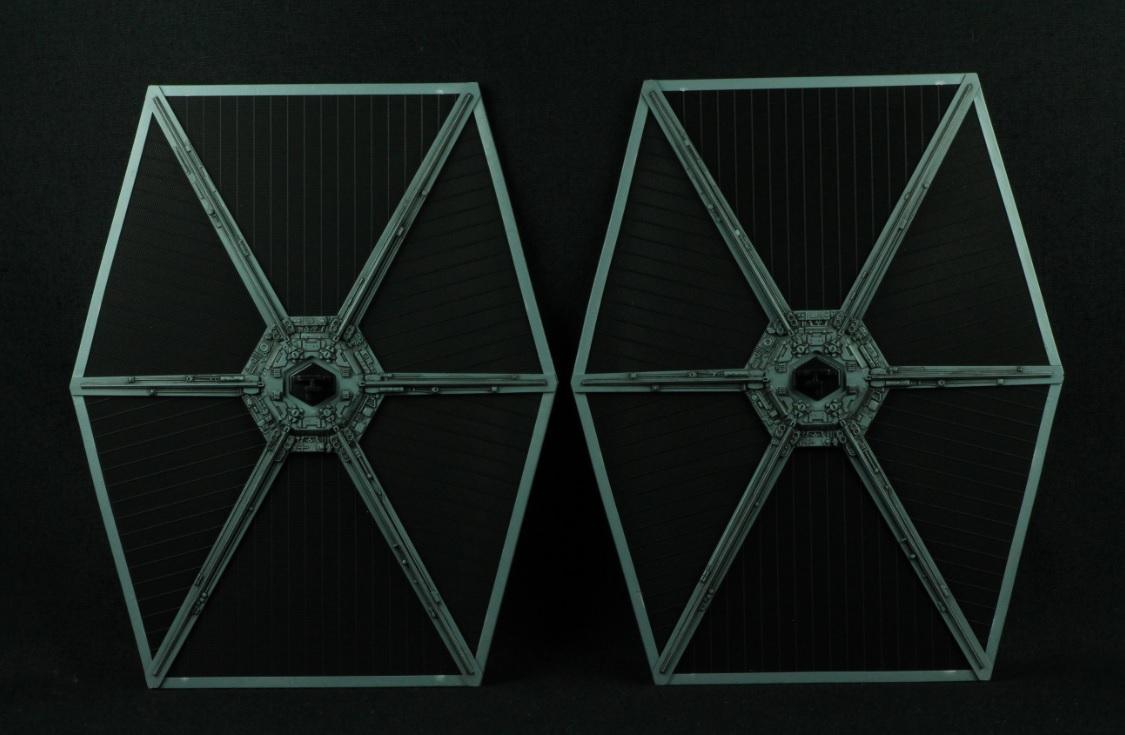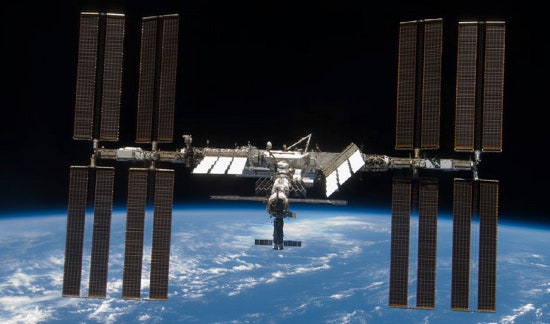The Empire’s fleet of Tie fighters are equipped with powerful engines and advanced weaponry, making them a formidable force in combat. But what powers these ships when they’re not in battle? That’s where the Tie fighter’s solar panels come in.
The Tie fighter’s solar panels are located on the top and bottom of the ship, and they are used to collect energy from the sun. This energy is then stored in the ship’s batteries, which power the engines and other systems.
The solar panels are an important part of the Tie fighter’s design, and they help to make the ship more efficient and effective in combat.
The Empire Strikes Back is one of the most iconic films in the Star Wars franchise. In it, we see the Empire’s massive fleet of Tie fighters engaged in a massive battle against the Rebel Alliance. What many fans don’t know is that those Tie fighters are powered by solar panels.
That’s right, the Empire’s main mode of transportation and warfare is powered by renewable energy. The Tie fighters have large solar panels on their wings that absorb energy from the sun. This energy is then used to power the fighters’ engines and weapons.
The Tie fighters’ solar panels are a great example of how renewable energy can be used in unexpected ways. We typically think of solar panels as a way to power our homes or businesses, but they can also be used to power vehicles and other machines. With the right application, solar energy can be a powerful force for good.

Credit: foureyed-monster.blogspot.com
How Much Does a Tie Fighter Cost?
Assuming you are asking about the cost of an actual TIE fighter from the Star Wars universe, the answer is that we don’t really know. In the Star Wars universe, the Galactic Empire is a dictatorship and does not have to answer to anyone about how it spends its money. However, we can make some estimates based on information from the real world.
In the real world, military aircraft can cost anywhere from a few million dollars to over $100 million dollars. The TIE fighter is a much simpler design than most real world military aircraft, so it is probably on the lower end of that range. Based on that, we can estimate that a TIE fighter would cost somewhere between $5 million and $50 million.
Of course, this is all just speculation. The true cost of a TIE fighter is anyone’s guess.
Is a Tie Fighter Possible?
No, a TIE fighter is not possible. The design of the TIE fighter is not aerodynamic and would not be able to fly. Additionally, the TIE fighter does not have any engines or propulsion system, so it would not be able to move.
How Heavy is a Tie Fighter?
Assuming you are referring to the T-65B X-Wing fighter, the answer is 120 metric tons. However, if you are referring to the TIE/ln starfighter, then the answer is much less at only 7.9 metric tons. For perspective, the X-Wing is about the same size and mass as a modern F-22 Raptor fighter jet while the TIE/ln is more comparable to a small Cessna single engine airplane.
What Company Makes the Tie Fighter?
The TIE fighter is a spacecraft used by the Galactic Empire in the Star Wars universe. The vehicle was designed by Industrial Light & Magic (ILM) and built by production company Nuts and Bolts. The TIE fighter is the Empire’s primary starfighter, with numerous variants fielded by the Imperial Starfleet.
The original design for the TIE fighter was inspired by early concept sketches for the Millennium Falcon, and the final design was inspired by the real-world World War II Messerschmitt Bf 109 fighter plane. The TIE fighter’s distinctive twin ion engines (TIEs) give it excellent speed and maneuverability, but its lack of shielding makes it vulnerable to enemy fire.
The TIE fighter is armed with laser cannons and can be equipped with torpedoes for space combat, or with bombs for ground attacks.
The TIE fighter’s cockpit is cramped and uncomfortable, and its pilot is unprotected from the vacuum of space.
The TIE fighter was introduced in the 1977 film Star Wars: Episode IV – A New Hope, and has appeared in numerous subsequent Star Wars films and television series. ILM built approximately 87 TIE fighters for use in the Star Wars films, and Nuts and Bolts built an additional 13 TIE fighters for use in the television series Star Wars: The Clone Wars.
Imperial TIE fighter: chapter 16 Solar Panels
Star Wars Solar Array
Solar arrays are devices that convert sunlight into electricity. They are often used in space satellites and other spacecraft, as they are a more efficient and environmentally friendly power source than traditional chemical batteries.
The Star Wars solar array is a type of array that was designed and built by the company, SolarCity.
It is the largest solar array in the world, and can generate enough electricity to power over 1,000 homes.
The array is made up of over 8,000 solar panels, which are mounted on a tracking system that follows the sun throughout the day. This allows the panels to generate more electricity than if they were stationary.
The electricity generated by the array is used to power the lightsabers of the Jedi Knights. The array is located in the desert of Tatooine, and its output is enough to power all of the lightsabers in the galaxy.
The Star Wars solar array is an impressive feat of engineering, and is a great example of the potential of solar power.
Tie Fighter Squadron
When it comes to the Tie Fighter Squadron, there is no shortage of information to be found. This post will aim to provide a comprehensive overview of everything that you need to know about these nimble and deadly ships.
The Tie Fighter Squadron was first introduced in the Star Wars universe in The Empire Strikes Back.
Since then, they have become one of the most iconic and recognizable elements of the series. These agile fighters are piloted by the Imperial forces and are equipped with twin ion engines that give them incredible speed and maneuverability.
While they may be small, the Tie Fighters are more than a match for the larger ships in the Rebel fleet.
Their speed and agility make them difficult targets to hit, and their firepower is more than enough to take down even the most heavily shielded enemy craft.
In recent years, the Tie Fighter Squadron has seen a resurgence in popularity thanks to the release of the new Star Wars movies. The squadron has been featured prominently in both The Force Awakens and The Last Jedi, and they are sure to play a major role in the upcoming Episode IX.
If you’re a fan of Star Wars, then the Tie Fighter Squadron is definitely a force to be reckoned with. These ships are fast, powerful, and always ready to fight for the Empire.
Tie Fighter Parts
Tie fighters are the Empire’s go-to ship in combat. They’re fast, maneuverable, and pack a serious punch. But what exactly goes into making a tie fighter?
In this blog post, we’ll take a look at the different parts that make up a tie fighter, and how they all work together to make this iconic ship.
The first part of a tie fighter is the cockpit. This is where the pilot sits, and where all the controls are located.
The cockpit is made up of a few different parts, including the control panel, the view port, and the seat. The control panel is where the pilot controls the ship, and the view port is where the pilot sees out of the ship. The seat is where the pilot sits, and is usually made up of padded leather or other materials to keep the pilot comfortable during long flights.
The second part of a tie fighter is the body. The body of a tie fighter is made up of two parts, the upper body and the lower body. The upper body is where the cockpit is located, and the lower body is where the engines are located.
The body of a tie fighter is usually made out of metal, to help protect the pilot and the ship from enemy fire.
The third part of a tie fighter is the engines. The engines are what make the tie fighter move, and they’re located on the lower body of the ship.
There are typically two engines on a tie fighter, although some variants have more. The engines are usually made out of metal, and they use a lot of fuel to operate.
The fourth part of a tie fighter is the wings.
The wings are what give the tie fighter its iconic shape, and they’re located on the upper body of the ship. The wings are usually made out of metal, and they help to stabilize the ship in flight.
The fifth and final part of a tie fighter is the weapons. The weapons are what make the tie fighter so dangerous, and they’re located on the wings of the ship. The weapons are usually made out of metal, and they fire lasers or other projectiles at enemy ships.
Tie fighters are complex machines, and they’re made up of many different parts. Each part has a specific purpose, and they all work together to make the tie fighter a formidable opponent in combat.
Tie Fighter Rear
The Tie Fighter Rear is one of the most iconic images from the Star Wars franchise. It is the back end of the Empire’s signature starfighter, the TIE Fighter. The rear of the TIE Fighter is characterized by its twin ion engines, which are used to power the ship.
The rear of the TIE Fighter is also home to the ship’s hyperdrive, which is used to propel the ship through hyperspace.
Conclusion
Solar panels are a great way to save money on your electric bill, but they can also be used to power other things around your home. In this blog post, we’ll show you how to use solar panels to power a Tie Fighter.
You’ll need:
– A solar panel
– A battery
– An inverter
– A charge controller
– Wiring
– A Tie Fighter
– A power source (optional)
First, you’ll need to connect your solar panel to your battery using the inverter and charge controller. Then, you’ll need to run the wiring from the battery to the Tie Fighter.
If you’re using a power source, you’ll need to connect it to the Tie Fighter as well.
Once everything is hooked up, you’ll need to turn on the power source and let the Tie Fighter charge for a few hours. After that, you should be good to go!
Solar panels are a great way to save money and power other things around your home. In this blog post, we’ve shown you how to use them to power a Tie Fighter.
